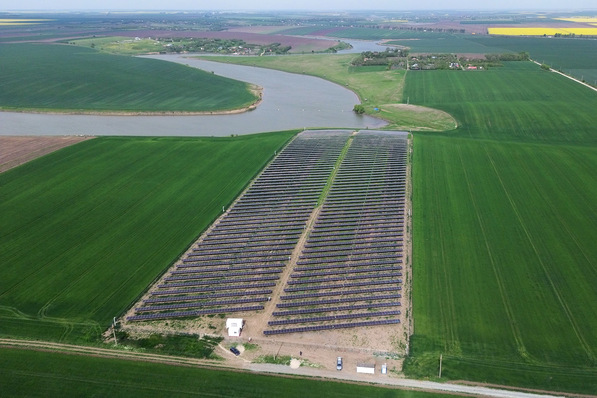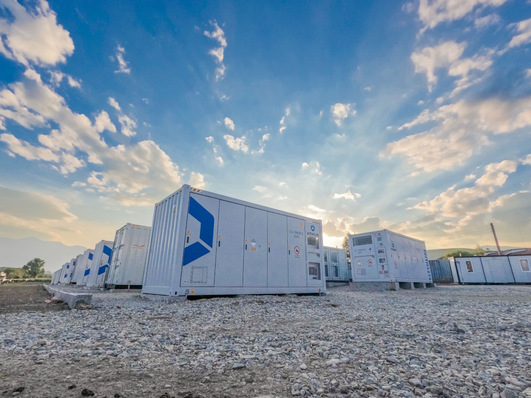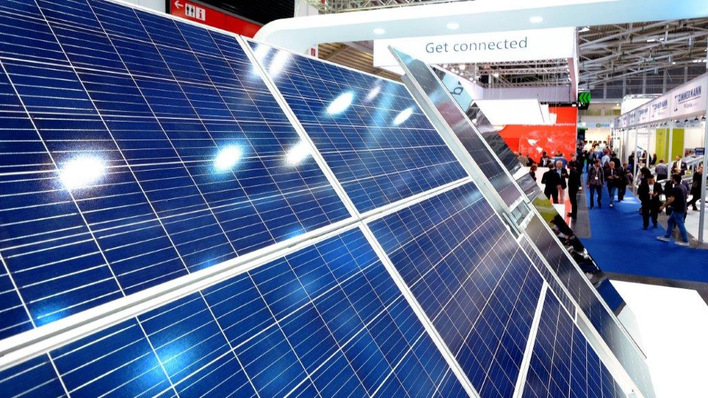Whether photovoltaics, storage technologies or coupling power, heat and mobility: With innovative business models and pioneering ideas, the finalists of The smarter E AWARD 2018 present a wide range of professional measures driving the sustainable energy economy forward. They are worthy contenders for one of the two categories of the newly introduced The smarter E AWARD. The “Outstanding Projects” category recognizes projects in the areas of solar, storage, energy management and clean transportation. The “Smart Renewable Energy” category shines the spotlight on the grid infrastructure of the future, digitalization technologies for the energy industry, the coupling of the electricity, heating and mobility sectors, and business models for electricity trading and marketing. The winners will be announced on June 20, 2018 at The smarter E Forum in hall B2, booth B2.570.
Outstanding innovations
The smarter E AWARD highlights groundbreaking individual innovations and creates transparency in a complex subject area. The Outstanding Projects 2018 category focuses on the integration of renewable energy into, or replacement of traditional energy markets. Photovoltaics is often combined with storage technology to ensure the availability and stability of renewable energies. This creates new opportunities with the potential to make a huge difference to people’s lives, generate new business ideas and give existing companies a boost. All projects impress with maturity and professionalism, and have often gone a significant step further in their development.
Direct current, sector coupling, electric mobility – fascinating trends for a smart future The applicants in the Smart Renewable Energy category reflect the strong trend towards sector coupling. For a long time, the energy transition has largely remained within the bounds of the electricity sector. However, many solutions have become commercially available that are also spurring the transition in the areas of mobility and heating, and interconnecting the sectors. A key driver is certainly the electrification of the heating and mobility sectors. Thanks to new hardware and software solutions, electric vehicles can be charged with self-generated and renewable power both at home and on the move. This development raises the rate of self-consumption while relieving the pressure on the grid. The key word is intelligent charging.
In the heating and cooling sector, the cost-efficient, decentralized generation of solar power is the driving force. There are ever more solutions which use direct current for air conditioning on site, without needing to take the roundabout approach of converting solar power into alternating current. In general, direct current (mini) grids are being met with increasing interest: Direct current can play on its advantages over alternating current, particularly as long-distance transport of electrical energy is becoming less common and because direct current is more suitable for quick charging electric vehicles.
The finalists in the “Outstanding Projects” category
BACH KHOA Investment and Development of Solar Energy Corporation (Vietnam): The Solar Experience Space at Ho Chi Minh City University of Technology in Vietnam is a zero-energy building used for student education. Practical experience with new products and technological solutions can be gained from the HVAC technology installed there, which includes photovoltaics, solar thermal installations and heat pumps.
BayWa r.e. Solar Projects GmbH (Germany): The solar installation with battery storage system for providing irrigation on the AKTC farm in Zambia uses a water reservoir for additional storage. The PV installation ensures an uninterrupted water supply and water management on the crop fields, and generates energy for the irrigation of 90,000 sqm of arable land.
EM-ONE Energy Solutions Canada Inc. (Canada): The project “Borno Solar Phase 1” involving three hospitals in a conflict region in northeast Nigeria has created a healthcare infrastructure which secures the medical cold chain using renewable, solar power, with the double advantage of making the hospitals self-sufficient and saving on diesel costs.
FENECON GmbH (Germany): This project based in Vienna, Austria, primarily aims to utilize energy storage devices to make the existing grid infrastructure as efficient as possible. At 100 kW/120 kW, the energy storage devices offset phase load differences and are used for peak load shutdown.
First Solar GmbH (Germany): The 300 MWp PV installation in California, USA, is integrated in the power grid and replaces grid services such as power grid stabilization, which previously had to rely on conventional power plants.
Fluence (USA): With 37.5 MW, the Escondido Energy Storage Array in California, USA, is one of the world’s largest lithium storage systems and increases the share of renewable energy in the grid. It can supply 25,000 customers with power for 4 hours and has a storage capacity of up to 150 MWh.
IBC SOLAR AG (Germany): In Hillesheim, Germany, a battery system has increased a wastewater treatment plant’s self-sufficiency from 80% to between 92 and 95% by using electrical energy generated from sewer gas combustion. This saves on the purchase of 35,000 kWh of grid-supplied power.
Solaria Corporation (USA): The Cornell Tech Campus in New York was designed as a zero- energy building and is supplied with energy from Manhattan’s largest photovoltaic installation to be aesthetically integrated into a new build (855 kW).
Trojan Battery (USA): A container system with an energy storage system and a photovoltaic installation has provided a village in Tanzania with power for the first time, raising the standard of living and education for the residents and kick-starting positive economic developments such as, for example, honey production.
Unlimited Energy (Australia) / TESVOLT GmbH (Germany): The free-standing 53 kW photovoltaic installation with a 48 kWh storage system is able to run an avocado farm in Australia on 100% renewable energy. The energy generated from the 300 days of sunshine per year has done away with the reliance on diesel generators.
The finalists in the “Smart Renewable Energy” category
Deutsche Energieversorgung GmbH (Germany): The innovative electricity rate SENEC.Cloud To Go stores unused photovoltaic power in the cloud before it is used to charge electric vehicles. 60,000 charging stations around Europe are supplied through collaboration with a Europe-wide charging station aggregator.
FerroAmp Elektronik AB (Sweden): The PowerShare technology is based on a DC nanogrid, which distributes locally generated power from renewable sources amongst users in the same DC grid. In the context of decentralized power generation, DC nanogrids are being met with growing interest as they can significantly reduce the costs of grid expansion.
Indielux (Germany): ready2plugin is a plug-and-play solar system with a capacity of up to 1,800 Watts, which can be connected to any standard power socket. A software-controlled limit on the operating power at the maximum permissible load guarantees electrical safety in accordance with VDE guidelines.
My-PV GmbH (Austria): The power manager AC*THOR from my-PV utilizes excess energy from photovoltaic installations for heat supply. It increases the self-consumption of solar power through the continuously variable control of the heating element,eliminating the need for a conventional gas or heat pump heating system. In case of insufficient solar radiation, additional electricity can be drawn from the public grid.
Reuniwatt (France): Sky InSight makes a reliable radiation and cloud course forecast for the 30 minutes ahead. This offers an extremely accurate, on-site prediction of the actual yield of a photovoltaic installation and helps make the operation of diesel-photovoltaic hybrid systems more cost-effective.
SMA Solar Technology AG (Germany): With the ennexOS platform, SMA presents a cross- sector IoT platform for energy management. Different energy flows can be controlled using appsbased on standard industry protocols. This ensures that upgrades are possible at any time.
Smappee nv (Belgium): The energy management system Smappee Plus continuously measures the energy consumption of households and their photovoltaic installations. Using SolarCoin based on blockchain technology, a tool is now available that transforms private homes into decentralized connection points which do not only produce and consume their own solar power, but also trade directly with one another.
SolarEdge Technologies (Israel): SolarEdge presents the first single-phase inverter which is also suitable for charging electric vehicles. An intelligent combination of locally generated electricity from photovoltaics and power supplied by the grid significantly reduces the charging time without overloading the grid.
sonnen GmbH (Germany): The sonnenCharger combines the private home charging station with a central control unit. This makes it possible to coordinate the charging of different electric vehicles in a low-voltage grid so intelligently that all the electric vehicles can recharge at the same time without causing grid system overload.
Statcon Energiaa Pvt. Ltd. (India): The proven energy management system from Statcon Energiaa has undergone further development with the aim of ensuring an uninterrupted solar power supply from larger cold storage systems. Its control method reduces or avoids the use of a diesel generator to supply power, thereby lowering costs. (HCN
The smarter E Europe and its single events are set to take place at the same time from June 20–22, 2018 at Messe München.For more information, please visit: www.TheSmarterE.de/en
Stay informed, get our free newsletter twice a week. Register here
Get to know the latest innovations, join our pv Guided Tours at The smarter E/Intersolar Europe, register here
More useful information:
https://www.pveurope.eu/solar-storage/innovative-battery-systems-sector-coupling







